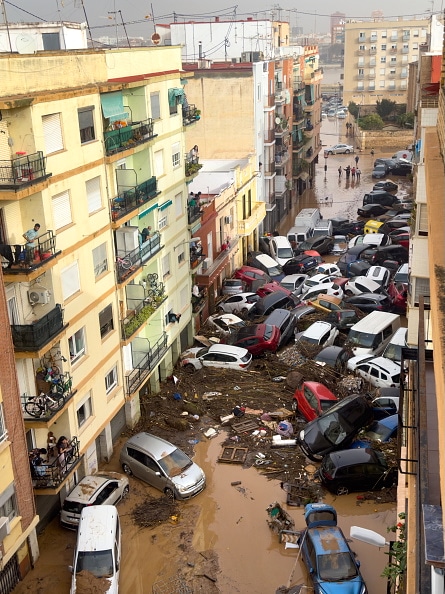This post was originally published on Eco Watch
At least 158 people have died in the “deadliest episode of flooding in Spain’s modern history,” reported The Guardian.
Many more are still missing.
The storm that started on Tuesday in southern and eastern Spain brought a year’s worth of rainfall in hours, CNN reported.
In the hardest-hit Valencia region, where most of the deaths occurred, roads and entire towns were flooded when rivers overflowed, leaving thousands without water or power.
“My father is going to be 100 years old now and he doesn’t remember a flood like that. It was terrifying to be here,” José Platero, a 69-year-old resident of Utiel — one of the towns in Valencia that was most affected by the severe flooding — told CNN. “We found him looking for personal belongings near his home.”
Spain’s army has been called in to help clear wreckage and distribute aid, reported BBC News.
“The government informs me that tomorrow at 8 in the morning a first wave will join to work during the day,” the Valencian president wrote on X, as BBC News reported.
As the region recovers, more extreme rainfall is in the forecast. Spain’s meteorological service issued new severe storm warnings on Thursday, reported The Independent.
Valencia’s government said trains had been suspended, along with other public services such as public libraries, schools and museums, CNN reported.
On Avenida del Milagro in Utiel, residents were helping each other clear the muddy water out of their homes.
“I started by putting towels on the door so that the water wouldn’t get in. But suddenly the garage door burst open,” Carmen, a local resident, told CNN. “The scene was terrifying, as the mixture of water and mud began to occupy the kitchen with so much force, it knocked down the refrigerator.”
The floodwaters also hit the cities and surrounding areas of Malaga and Murica.
In the La Torre neighborhood of Valencia, the water was chest-high.
“In half an hour, we lost almost everything,” one survivor told CNN.
Local residents voiced their frustrations to reporters and on social media for not receiving government alert warnings until the deadly flooding had already begun.
“Those people wouldn’t have died if they had been warned in time,” Laura Villaescusa, manager of a local Valencia supermarket, told Reuters.
According to residents in several towns, mobile phone alerts were not sent until 8 p.m. Tuesday, which was several hours after Aemet, the national weather service, had issued a heavy rain red alert warning of a potential eight inches in a less than 12-hour period.
“It is appalling to see so many people dying in floods in Europe, when yet again weather forecasters had predicted extreme rainfall and issued warnings. The tragedy of people dying in cars and being swept away in streets is entirely avoidable if people can be kept away from rising flood water,” Hannah Cloke, a University of Reading hydrology professor, told CNN. “This suggests the system for alerting people to the dangers of floods in Valencia has failed.”
The Spanish government has decreed three official days of mourning, beginning on Thursday. Prime Minister Pedro Sanchez said the government would do everything it could to help victims of the calamitous flooding.
The torrential rains were likely caused by a pool of cool air high up in the atmosphere referred to as “gota fría,” or cold drop, by meteorologists in Spain.
Determining the exact part climate change played in the disastrous flooding will take more analysis by scientists, but it has been established that human-caused global heating makes extreme rainfall events more intense and more likely to happen. Warmer air also has the potential to hold more moisture, which can then be unleashed in the form of severe downpours.
“We can’t say anything on the fly,” said senior state meteorologist Ernesto Rodríguez Camino, who is a member of the Spanish Meteorological Association, as reported by CNN. “[I]n the context of climate change, these types of intense and exceptional rare rainfall events are going to become more frequent and more intense and, therefore, destructive.”
The post Spain Flooding Death Toll Climbs to 158 as Severe Weather Continues appeared first on EcoWatch.




0 Comments